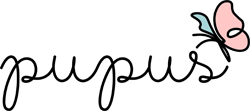A few words about tethering

Even if it is not used as a reusable nappy, a muslin nappy is a basic necessity and should be included in every baby layette. Muslin has a wide range of uses – it can be used as a washcloth, a towel to dry your baby's face, to wrap your baby in when putting them in the bath, and often to dry them after bathing. At the same time, it can be used as a sunshade in a pram or car, a changing mat, a blanket to cover your baby on hot days, and even a mosquito net. And most importantly, from our point of view, muslin is also an insert or a type of reusable nappy.
What is a muslin cloth? It is a heavyweight cotton or cotton fabric with an admixture of, for example, bamboo, which ensures high absorbency. Its characteristic feature is a weave of smaller or larger squares, the size of which depends on the weight of the muslin. The natural fibres from which tetra is made mean that it does not cause irritation, is gentle on the baby's skin and is highly breathable. Thanks to tetra, the baby's skin is healthy and the baby has a thin and highly absorbent insert in the nappy.
Tetra comes in several sizes, the most popular being 50x50 cm, 60x60 cm, 70x70 cm, 80×80 cm or a 60×80 cm rectangle. In addition, tetra comes in many weights, and the weight affects the absorbency of the tetra. The weight of tetra can be determined by looking at the way it is sewn – tetra with a weight of 140 has larger squares, while tetra with a weight of 110 has smaller ones. Intuitively, we can immediately guess that a higher-weight muslin absorbs more moisture than a lower-weight muslin.
I really like muslin because it can be successfully used even for newborns – 50x50 cm or 60x60 cm muslin. What's more, it is one of the best solutions we offer to parents of such little ones. Firstly, when folded properly, muslin is thin, which makes it more comfortable for the child. Muslin is also extremely absorbent and dries quickly. As muslin is mainly made of cotton, it should not irritate the very delicate skin of newborns.
We can put together a nappy starter kit consisting of, for example, 3 or 4 wraps, about 30 muslin nappies, a few Snappi clips, paper, washing powder and a bucket. Thanks to terry cloth, our reusable nappies can be very economical. However, we should remember that terry cloth absorbs moisture evenly and quickly, but it is in direct contact with the baby's skin. Children quickly feel not only moisture but also cold. Depending on our needs and expectations, this can be an advantage or a disadvantage. The advantage is that they learn to use the potty faster, while the disadvantage is that nappies need to be changed more often than when using pockets or covers with microfibre or bamboo inserts lined with microfleece on at least one side. To ensure that a child using a cloth nappy does not feel too damp, we recommend using disposable paper pads or Dry Bum inserts.
Our parents have bad memories of tetra, scaring us with stories of how difficult it was to use, but our experience with tetra is very different from what our parents had to deal with when we were little children. 
First of all, we no longer have to boil nappies, wash them in a washing machine, in soapy water, and dry them with great effort and hardship. Nowadays, we can wash nappies with Nappy Fresh antibacterial powder at 30 degrees. We can also wash them at 60 degrees, which certainly won't hurt, and will improve our and our parents' well-being and increase confidence in the hygiene of the nappies. Washing muslin at 90 degrees is allowed (e.g. after a stay in hospital), but not recommended as it is simply not environmentally friendly. To kill faecal bacteria, a wash temperature of 60 degrees for at least 20 minutes or washing with a disinfectant is sufficient. Tetra washes very well and dries quickly. Tetra can be tumble dried, but it may shrink slightly. Secondly, muslin cloths do not need to be ironed. Really! What is more, we should not do so, because ironed muslin fibres become less fluffy and therefore less absorbent. Years ago, terry cloth was ironed for various reasons, including the belief that this removed bacteria and fungi from the nappy. In addition, parents of small children ironed terry cloth for fear of discomfort during use. Thirdly, terry cloth can be used in nappies in two ways – we can fold it into a rectangle and use it both in a pocket and in a wrap as a regular insert, or we can fold it into a triangle and then fasten it like a moulded insert using a Snappi. Exactly as shown in the photo below. To do this, use two terry cloth nappies, e.g. to make a triangle-shaped nappy measuring 80 x 80 cm, and to fold the second nappy into a rectangle, e.g. 60 x 80 cm. To use these terry cloth pants, made from two terry cloth nappies, you will need a Snappi clip and a cover.
If the temperature is very high in summer or your child suffers from severe nappy rash,
We recommend dressing your baby only in a folded nappy, without a cover. This allows your baby's skin to breathe and heal quickly. A waterproof changing mat is ideal for this type of nappy changing, as it will protect the cot and pram.
Here you can watch our video on how to fold a tetrahedron in two ways – an aeroplane and a kite:
